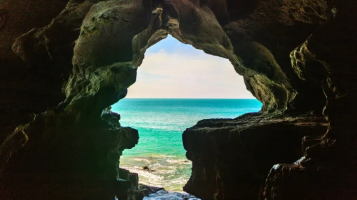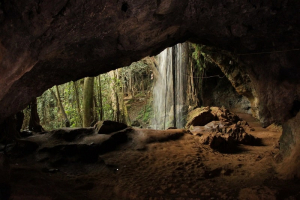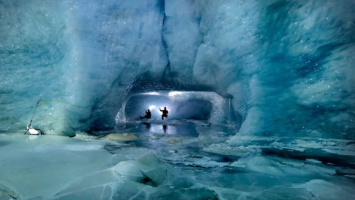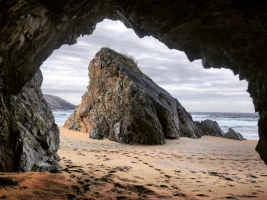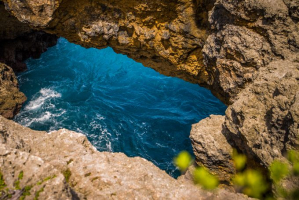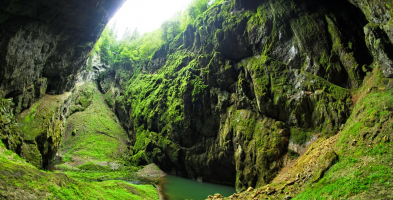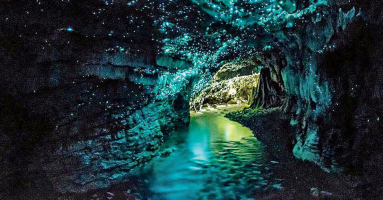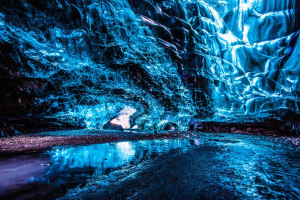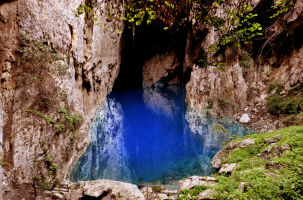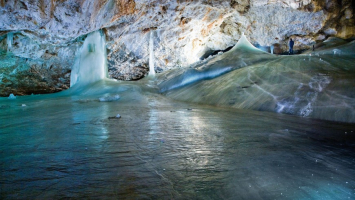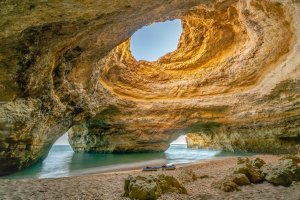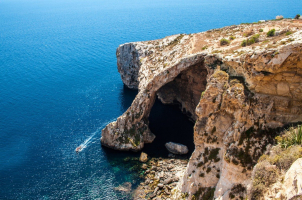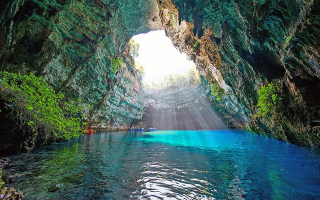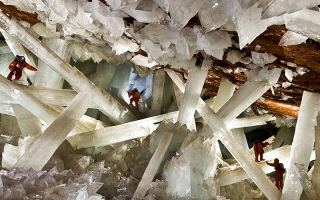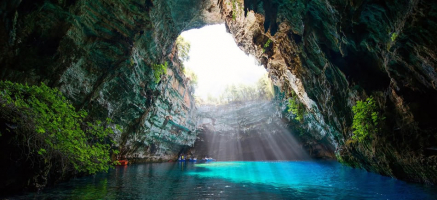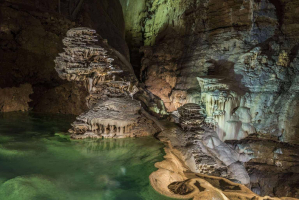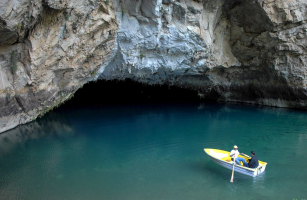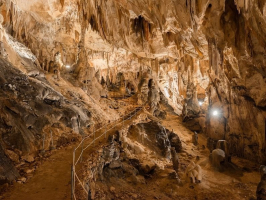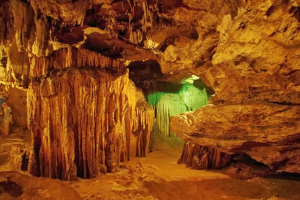Top 10 Most Beautiful Caves in Germany
Mysterious worlds beneath the earth's surface, winding corridors, and an ancient history When planning a trip to Germany, it's easy to focus on the country's ... read more...larger cities and medieval villages, but the country's stunning landscapes are equally captivating. There are numerous complex cave systems throughout Germany, many of which have been opened to the public. Here are the most enthralling. The Most Beautiful Caves in Germany are listed below.
-
The Atta Cave, is the Most Beautiful Cave in Germany, also known as the Attendorn Dripstone Cave, is one of Germany's largest dripstone caves. The cave was discovered while quarrying limestone at the Bigge Valley Limestone Works (Biggetaler Kalkwerk) on July 19, 1907, and was opened to tourists that same year by the owners. Today, the Atta Cave is the most visited show cave in Germany, attracting approximately 350,000 visitors per year and serving as an important economic factor for the town. Among its many attractions are the numerous calc-sinter flowstone drapes that have been colorfully tinctured by iron oxides. Stalactites, stalagmites, and stalagnates abound. Several pieces of calcite crystal formations were moved into the cave's public area to be displayed. Atta Cave is often listed among Germany’s most beautiful limestone caves and draws no less than 40 million people underground each year.
The cave began to form during the Devonian period (about 400 million years ago), when the region of the present-day cave was still a bay of the sea. Caverns were formed over time in the layers of limestone that were being laid down as a result of carbonic acid weathering caused by rainwater seeping through it, as well as mixed corrosion (Mischungskorrosion). Several of the speleothems were broken by an earthquake several thousand years ago. Bats live in the caves as well, entering through rock crevices on the hilltop. Elmar Hammerschmidt discovered other parts of the cave in 1985. The cave's total length is 6,000 meters, but it has not been completely surveyed. There is a 500-meter-long circular tour for the show cave section. It is accessed via a 90-meter-long gallery that guides visitors through it. The original entrance is now protected by a metal door. A water curtain is supposed to keep the smell of cheese from spreading too far in one section of the cave where it is stored. The cave is still privately owned today. It has been chastised for its high entry fees and photography ban.
Location: Finnentroper Straße 39, Attendorn, Germany
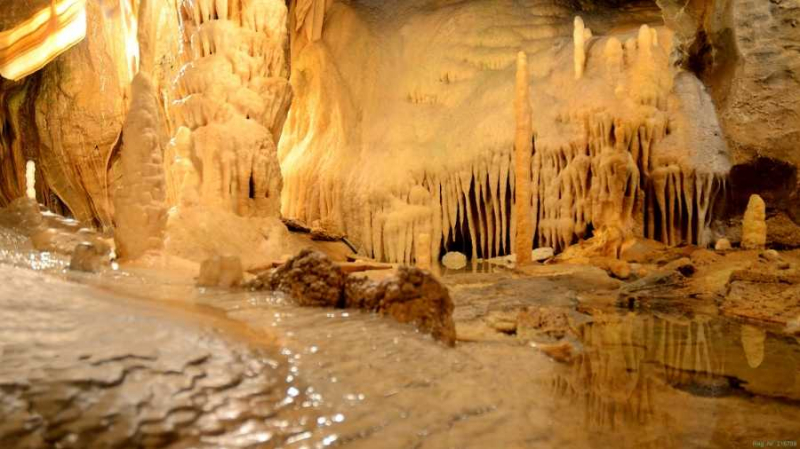
atta-hoehle.de 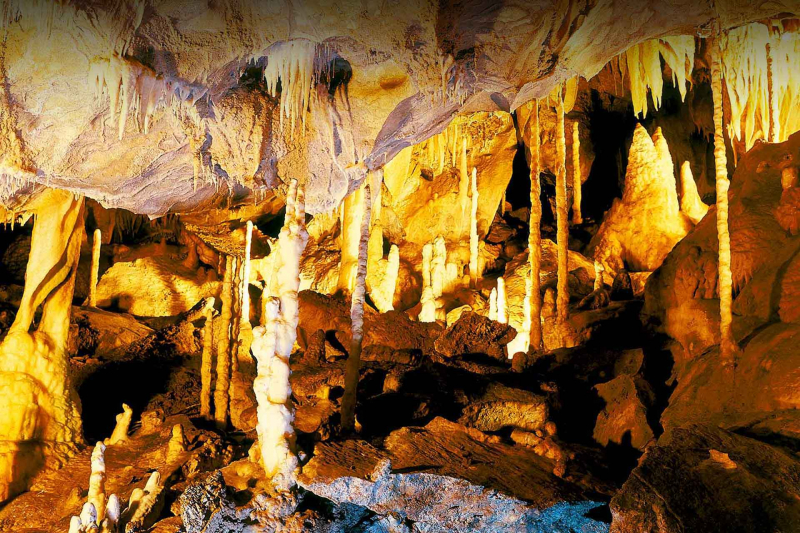
atta-hoehle.de -
Bad Segeberg is a small town in northern Germany, 60 kilometers (37 miles) north of Hamburg. The cave was discovered in 1913 and has captivated visitors from all over the world ever since. Tourists aren't the only ones drawn to the underground world – over 25,000 bats hibernate in the sheltered system each winter. To protect the animals, tours are only available during the summer.
The Kalkberg is a one-of-a-kind natural monument that serves as a landmark in Bad Segeberg. It offers a spectacular view of the town and its surroundings from its 91-meter-high vantage point. The Kalkberg caves are fascinating rock formations beneath the Kalkberg. Not only are they geologically unique, but the variety of seven different species of bats makes them a natural treasure trove. On a guided tour, you will discover the largest natural wintering grounds for more than 15,000 bats in North and Central Europe.
Location: Oberbergstraße 27, Bad Segeberg, Germany
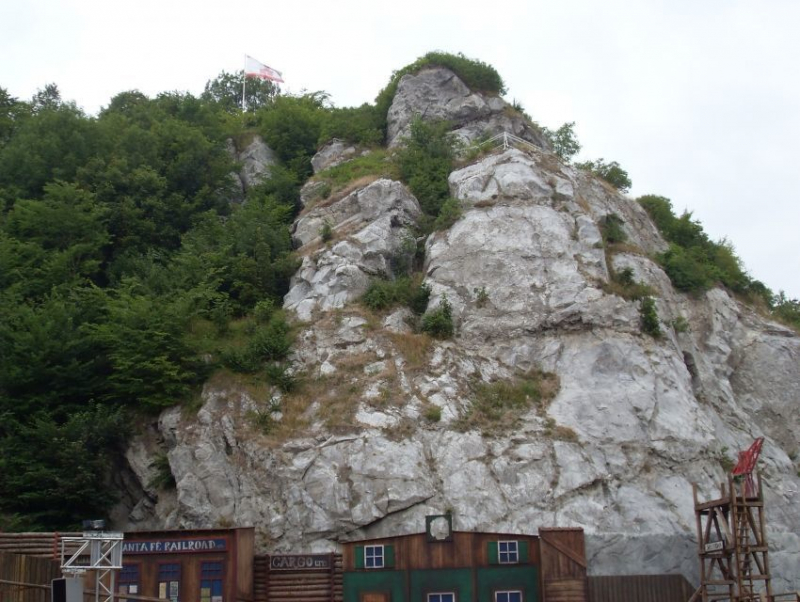
showcaves.com 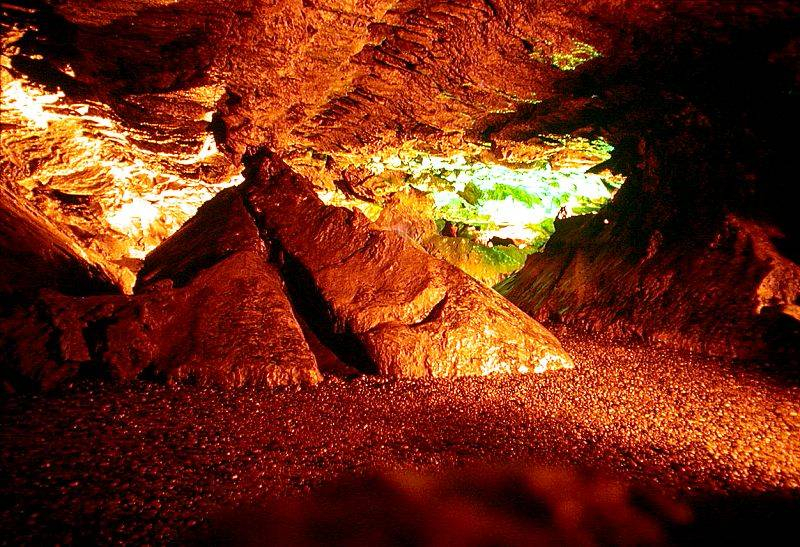
showcaves.com -
The Teufelshöhle, or Devil's Cave, is one of the Most Beautiful Caves in Germany, and is located in Pottenstein, approximately one hour north of Nuremberg. Faults and rainwater have created a 3-kilometer (1.9 miles) maze of delicate and vast dripstone caves over nearly three million years. The underground attraction attracts tourists today, but the unearthed skeletons of now-extinct cave bears demonstrate that the large mammals inhabited the caves 25,000 years ago.
The temperature of the water in the underground river is always 72 degrees Fahrenheit (22 degrees Celsius). In cold weather, water vapor rising from the river's surface forms a visible plume above the cave's entrance, which early settlers mistook for a chimney from Hell. Originally, the opening to the surface was a small solution sinkhole through which visitors had to squeeze to get to the water. To facilitate access, the opening was enlarged in the 1990s. The cave expands below water level to up to 200 feet (61 m) across (a shape described as an "inverted mushroom"). The cave's maximum depth is 54 feet/16.5 meters, and its surface diameter is 120 feet. The water table in the area has caused the cave's water level to fall. However, the water level has risen above the main stage/platform as of 2018. In the early 1990s, the cave was opened to the public as a dive site.
Four underwater passages extend from the pool under the opening, ranging in depth from 5 feet (1.5 m) to 90 feet (27 m). The passage known as chamber 3 was 70 feet (21 meters) underwater and contained animal and human remains as well as artifacts. Mastodons, ground sloths, camels, horses, dire wolves, bog lemmings, Florida spectacled bears, saber-toothed cats, and peccaries were among the extinct (Pleistocene) species found with the human remains and artifacts. The human remains date back to around 7,500 BC.
Location: Teufelshöhle, B470, Pottenstein, Germany
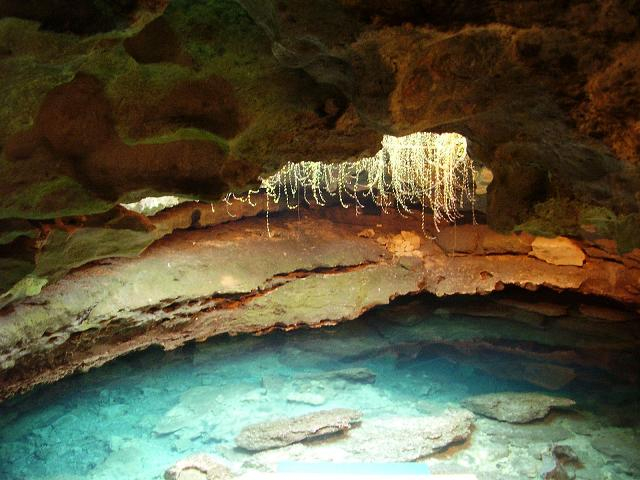
devilsden.com 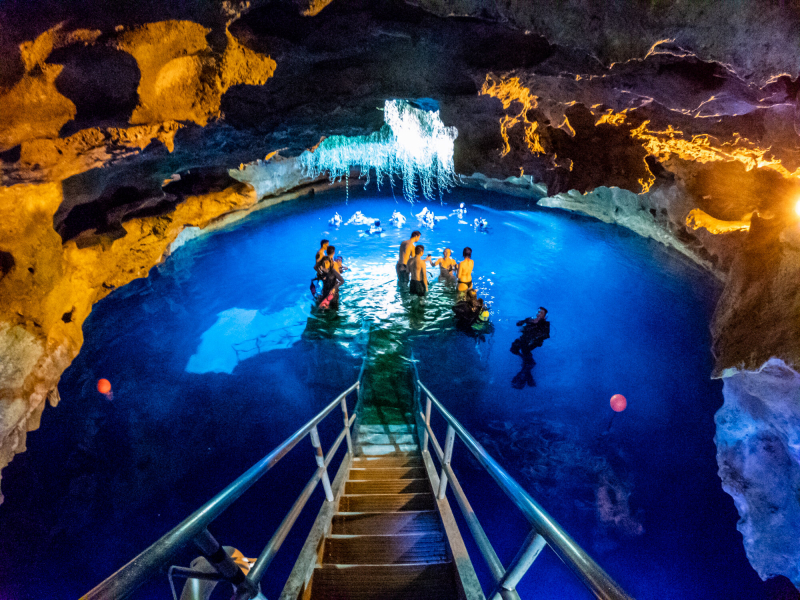
devilsden.com -
Klutert Cave, also known as the Kluterthöhle, is Germany's longest cave, stretching over 5 kilometers (3 miles). The cave has approximately 300 courses and is lined with a series of underground streams, lakes, and fossils that have been present for the last 350 billion years. The cave is an adventure land with fascinating animals and a fascinating history; it was used as a raid shelter during WWII. Kluterthöhle also provides Speleotherapy to patients suffering from asthma, bronchitis, hayfever, and a variety of allergies and skin disorders.
The Kluterhöhle cave system features underground lakes, strange rock formations, and a maze of 380 tunnels. The fossilized remains of shells, corals, and sponges cover the rocky walls and bear witness to a time when the region near Dortmund was covered by a reef. Themed tours focus on different aspects of the cave. The 'XX-Treme tour,' which takes visitors through narrow passageways and pitch-black caverns, is recommended for thrill-seekers.
Location: Gasstraße 10, Ennepetal, Germany
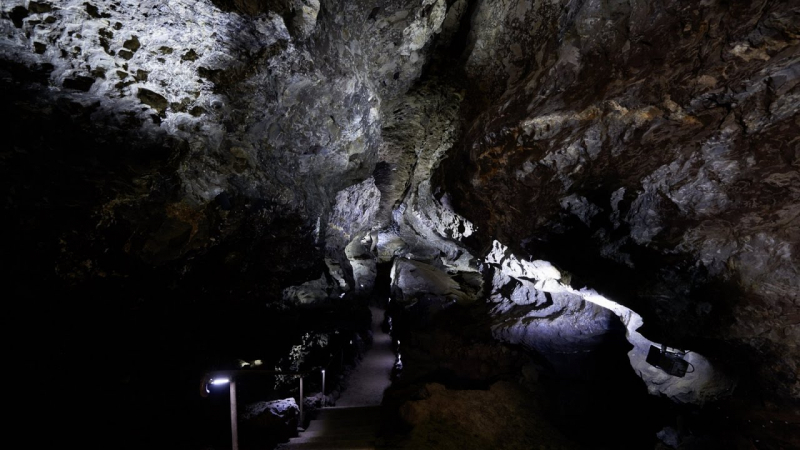
cityseeker.com 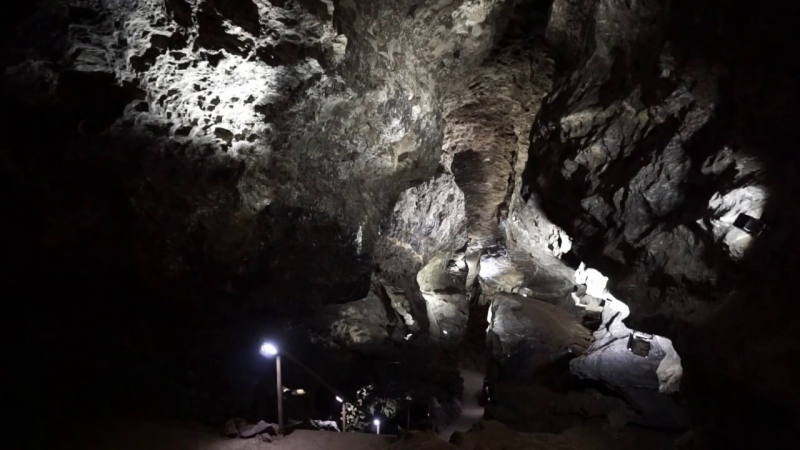
cityseeker.com -
The Schellenberg Ice Cave is a cave in Upper Bavaria, Germany, near the Austrian border, located in the Berchtesgaden Alps. At 1570 meters above sea level, the cave is part of the Untersberg massif and is Germany's only open ice cave. It has an estimated ice volume of 60,000 cubic meters and has been operated as a show cave since 1925. The ice cave's explored length is 3,621 meters, of which 500 meters is a guided tour at temperatures near zero degrees Celsius. Closed from October to May,[1] the ice cave can only be reached after a several-hour walk from the valley below or a slightly shorter walk from the Untersbergbahn mountain station. It is one of only two show caves in Germany that do not have electricity and rely solely on carbide lamps carried by visitors. It is named after the nearby town of Marktschellenberg in the Berchtesgadener Land district. It was first mentioned in writing in 1826, and it was fully explored by 1874.
The Schellenberg Ice Cave is one of the Most Beautiful Caves in Germany. The fascinating cave is open to the public, but access is limited to those who are willing to hike for several hours up to an altitude of 1,000 meters (3,281 feet). The entrance is snowed in during the winter, but as the temperatures rise in the spring, the meltwater runs off and congeals into bizarre ice formations. Between May and October, the cave can only be explored as part of a guided tour.
Location: Marktschellenberg, Germany
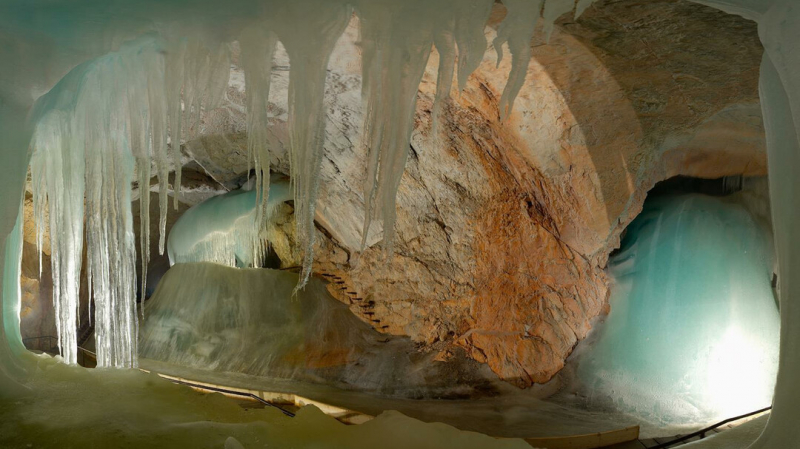
salzburg.info 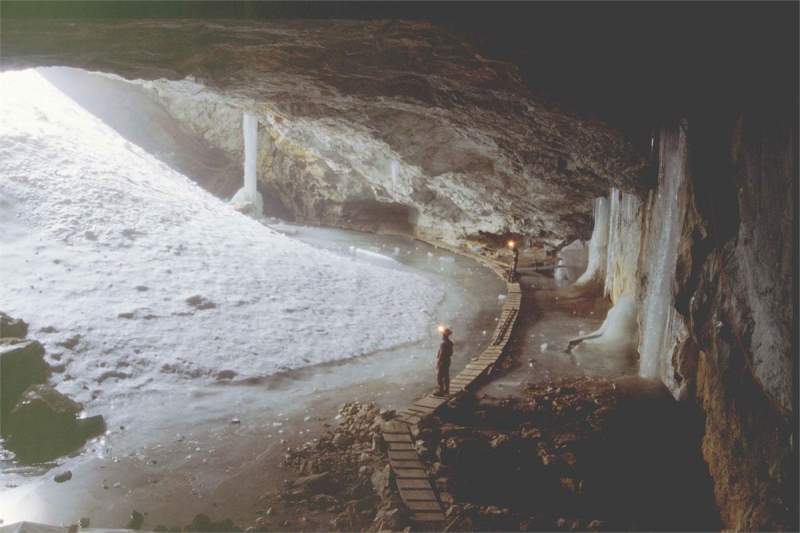
salzburg.info -
The Kubacher Kristallhöhle is one of the few show caves in Hessen (Hesse) and, as the name suggests, a unique cave. However, the term "crystal cave" is exaggerated, and the cave's true specialties are something else. This cave is a massive cleft or cracks in the rock. It was formed along pre-existing tectonic cracks in the rock by the solution of almost standing groundwater, and the walls exhibit impressive corrosive solutional forms. The cave, like the original crack, is tilted about 15 degrees from vertical. The tour's deepest point is nearly 70 m below the surface, and the cave is nearly 30 m high at this point. As a result, this chamber is the highest of any show cave in Germany.
An artificial adit was constructed from the entrance building to the cave's level. The natural cave is entered at the cave's highest point on one end. The path follows the almost straight cleft, descending steadily until it reaches the cave's lowest point at the other end. Visitors return to the entrance via the same route they came in on. Except for one location, the cave has almost no normal speleothems such as stalagmites or stalactites. However, there are a plethora of impressive solutional forms. The preceding description necessitates a technical remark: caves are always difficult to visit; even well-developed show caves have dripping water, slippery paths, dark spots, are cool, and, of course, have steps. As a result, they always necessitate a certain level of physical fitness and footing. The management decided that a warning sign at the cave's entrance was necessary. The cave is not recommended for people who have cardiovascular disease or have difficulty walking. This cave descends 70 meters, and it is obvious that this height must be climbed on the way back.
The cave contains two areas with extraordinary speleothems, including a strange and rare speleothem known as bulbous calcite or cave coral. The first location is right at the cave's entrance in the first chamber. Cave coral covers the walls, which are sometimes flecked with other minerals. The 50 cm borehole and the small group of stalagmites that was discovered first and is the only dripstone formation in the cave are shown here. The second area is a narrow passage in the cave's center, with even more beautiful cave coral filling holes and cracks and making it difficult to find. To find the hidden minerals, we recommend walking slowly and looking up and back. This is one of the main attractions of this cave.
Location: Auf dem Kalk 1, Weilburg/Kubach, Germany
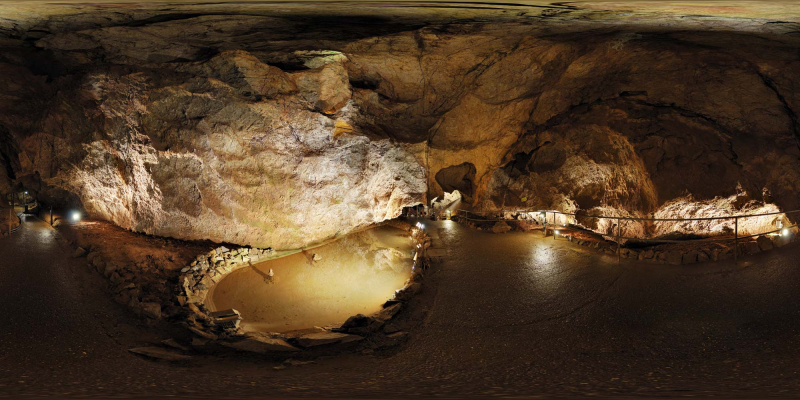
cityseeker.com 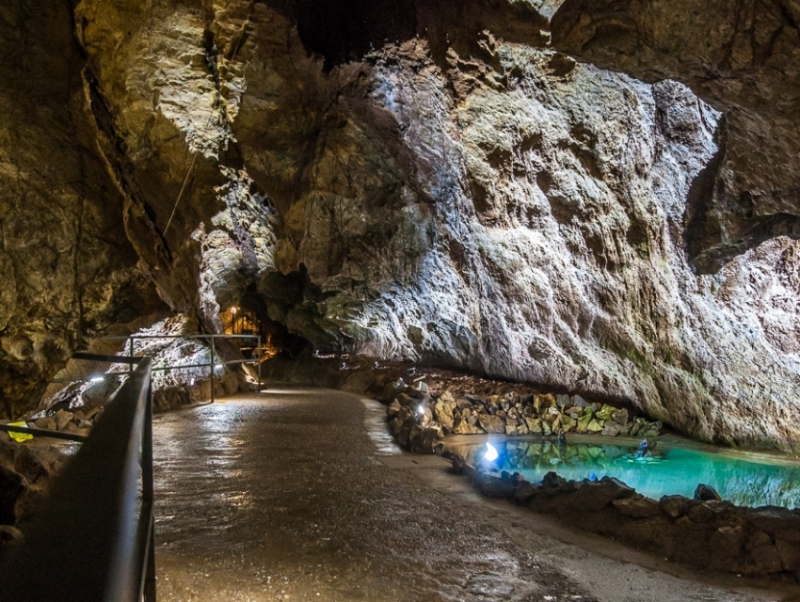
cityseeker.com -
Syrau's dragon cave is one of the Most Beautiful Caves in Germany and is about 16 meters underground. The legendary Vogtland underworld was discovered in 1928. Several dripstones, crystal-clear lakes, and water-shaped halls were discovered during quarry work. Today, visitors can marvel at Saxony's only show cave and learn fascinating facts about its creation and discovery on a guided tour. There are 330 steps down to a 10°C cold cave. It gets its name from a Vogtland legend about a dragon who was once responsible for his misfortune in Syrau. The incredible cave panorama invites you to an adventure for the entire family. Between May and August, the Dragon's Cave is a one-of-a-kind setting for a spectacular laser show. On the ground, children can burn off steam on the playground and in the new Terra Vira – Living Earth – adventure garden, while parents can unwind with a cup of coffee in the magnificent cave park.
Drachenhöhle translates as "dragon's cave" and is made up of mystical rock formations and crystal-clear underground lakes that gleam in green. The cave was discovered by chance by construction workers in 1928, and it was opened to the public a few months later. Today, a variety of events draw visitors to the cave, including laser shows that illuminate the spectacular 'Walhalla' cavern during the summer months.
Location: Höhlenberg 10, Paul-Seifert-Straße, Syrau, Germany
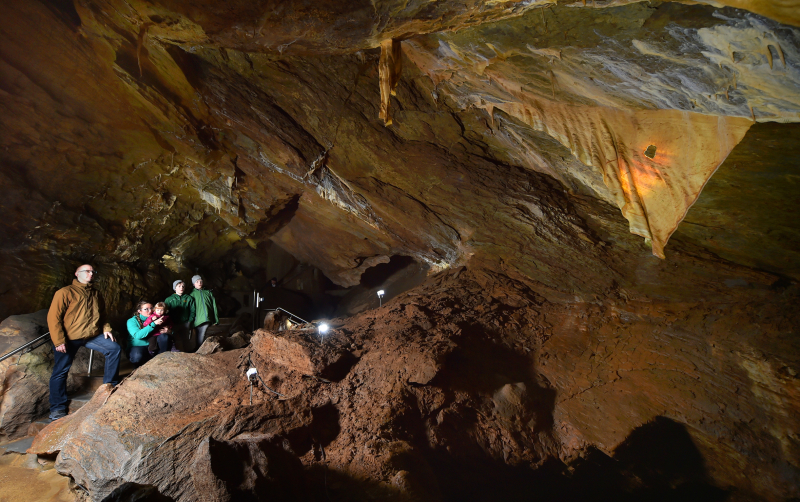
plauen.de 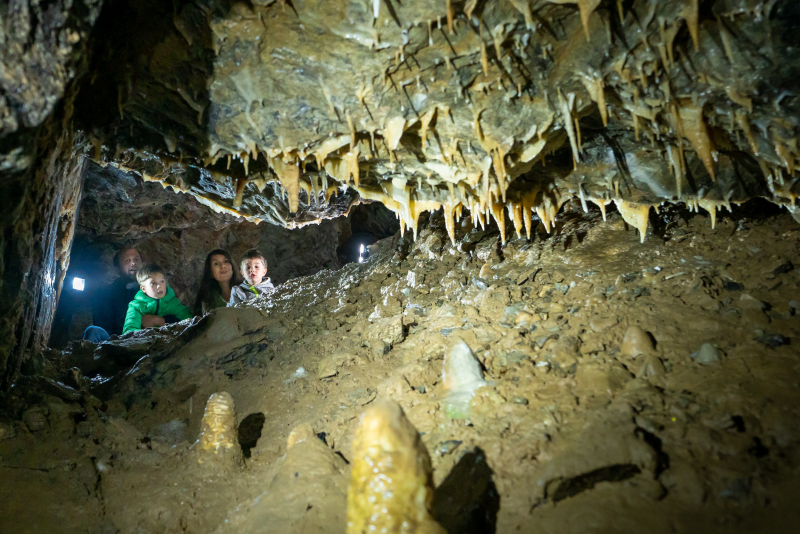
plauen.de -
Baumann's Cave, located near Hermann's Cave, is Germany's oldest show cave and is located in Rübeland in the district of Harz. The grotto has existed in the Devonian limestone of the Elbingerode Complex since the formation of the Bode Valley. Man has been visiting the cave since the Stone Age, and it was not discovered in 1536, as many written accounts claim. The year of discovery, 1536, as well as the story of the miner, Baumann, who is said to have discovered the cave, are all part of a hoax dating back to Nazi times when a politically acceptable jubilee date was sought.
The cave appears frequently in early scientific and travel literature because it has been open to the public for guided tours since 1649 when Valentin Wagner was appointed as the first cave guide. Baumann's Cave is most likely Germany's oldest regularly visited and guided show cave. Johann Wolfgang von Goethe was one of its most famous visitors. The Goethesaal, the cave's largest chamber, is named after him and is equipped with seats and a stage for concerts and plays. The cave was sealed off from an early date, preserving its rich display of stalactites and stalagmites. The cave is particularly well-known for the numerous cave bear bones discovered there, among other things.
Location: Blankenburger Straße 36, Oberharz am Brocken / Rübeland, Germany
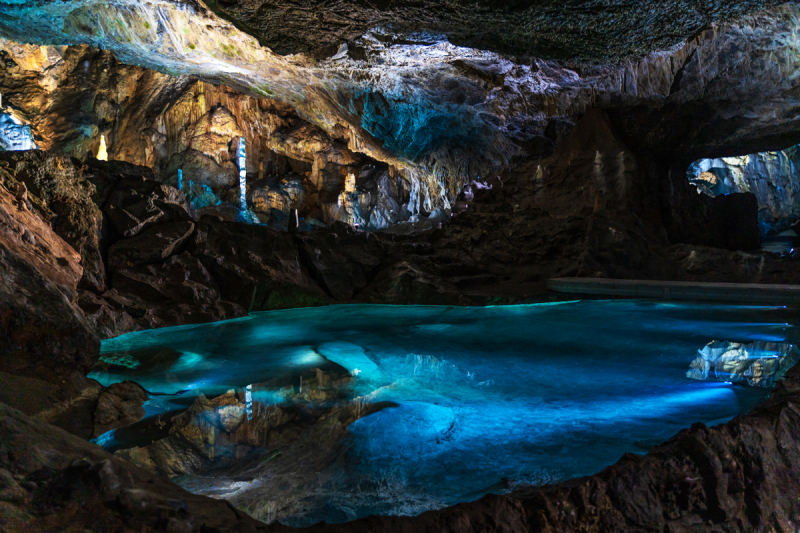
harzer-hoehlen.de 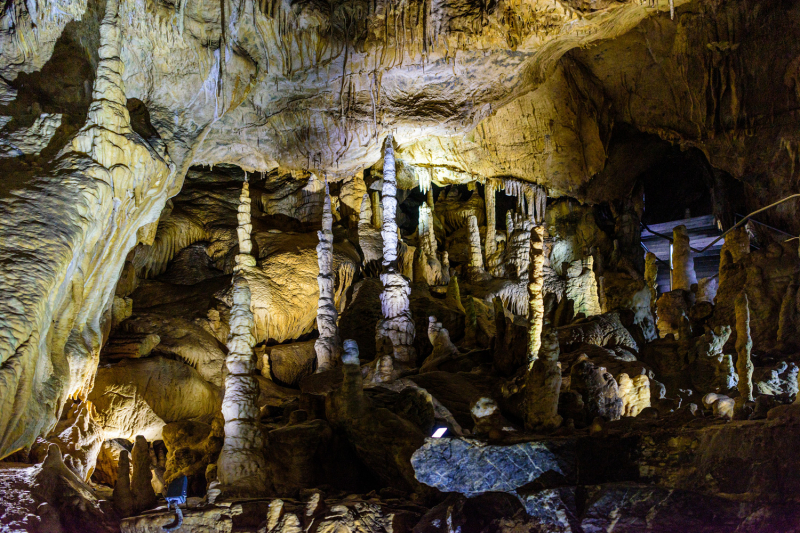
harzer-hoehlen.de -
The Laichinger Tiefenhöhle is Germany's deepest show cave and the only vertical cave open to the public and is one of the Most Beautiful Caves in Germany. This cave has few formations, but it offers an interesting view of a Jurassic ocean. The cave's entrance, located on the Schwäbische Alb plateau (Swabian Jura), is in a relatively small area of dolomite CaMg(CO3)2. In some ways, this rock is to blame for the cave's discovery. This rock's weathering produced fine sand, which can be found in cracks and caverns between the rocks. This is the only source of sand on the Alb plateau: because there is no water on the surface, there are no river or sea sediments that could contain sand.
To explore the world of the Laichinger Tiefenhöhle, visitors must descend 55 meters (180 feet) deep into the ground via several flights of stairs. It is Germany's only open pit cave and is comprised of a complex network of tunnels, shafts, and halls. Between March and November, tours take visitors on a journey to discover fossilized reefs and bizarre limestone deposits.
Location: Höhleweg, Laichingen, Germany
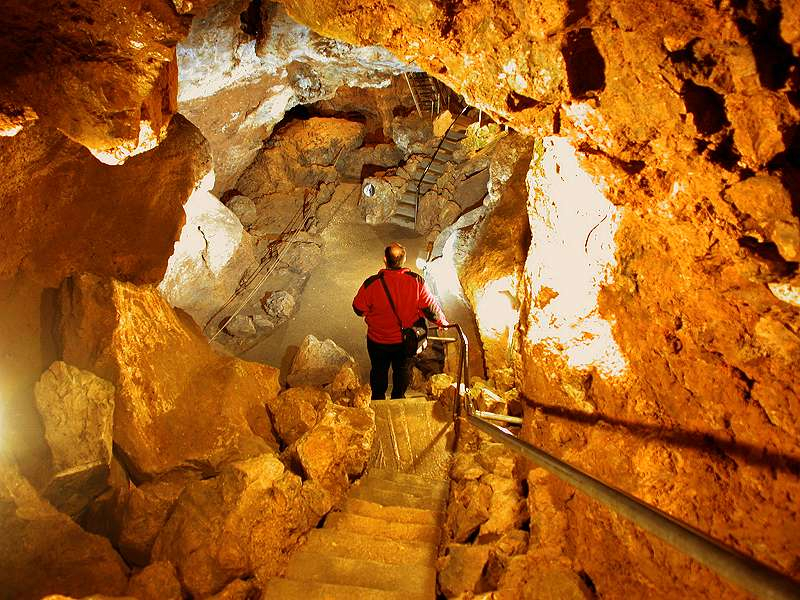
showcaves.com 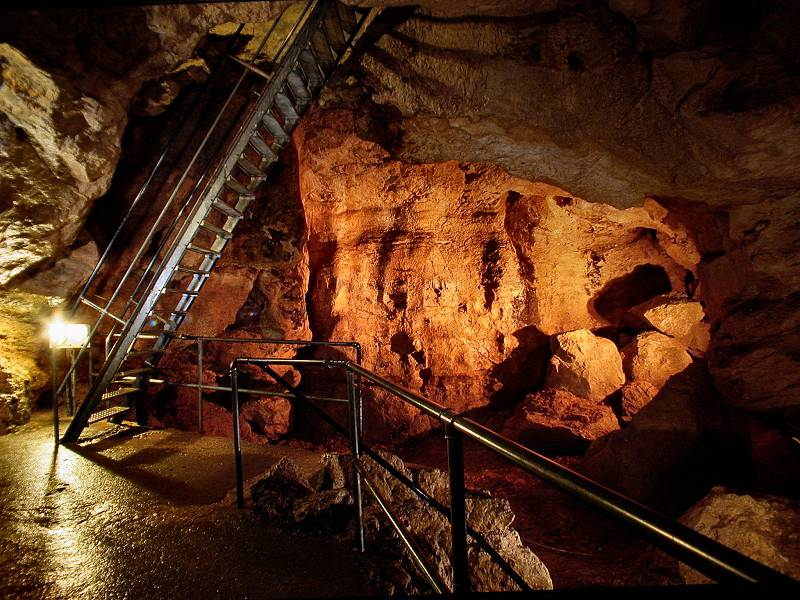
showcaves.com -
The Saalfeld Fairy Grottoes are caverns or grottoes of a former mine near Saalfeld, Thuringia. They've long been known for their plethora of colorful mineral formations (speleothems) formed by water dripping through the relatively soft rock over many years. The Feengrotten has been described as "the most colorful cave grottoes in the world" by the Guinness Book of World Records since 1993.
The caverns are made up of three chambers that are linked by galleries. The first chamber contains information about the mine's history, which ranges from the 16th to the 19th centuries, and was an alum shale mine that closed in 1850 but reopened for sightseeing in 1914. The historical context includes information about environmental radiation treatments that were previously available there until they were discovered to be dangerous.
The source of the mineral-laden water that formed colorful stalagmites, stalactites, and other shapes over the centuries can be found in the second chamber. The third chamber houses the famous "Fairy Kingdom" (Märchendom), which consists of a diverse collection of deposits that, when illuminated by theatrical lights and reflected in a perfectly still pool of water, are said to resemble miniature castles and other structures.Location: Feengrottenweg 2, Saalfeld/Saale, Germany
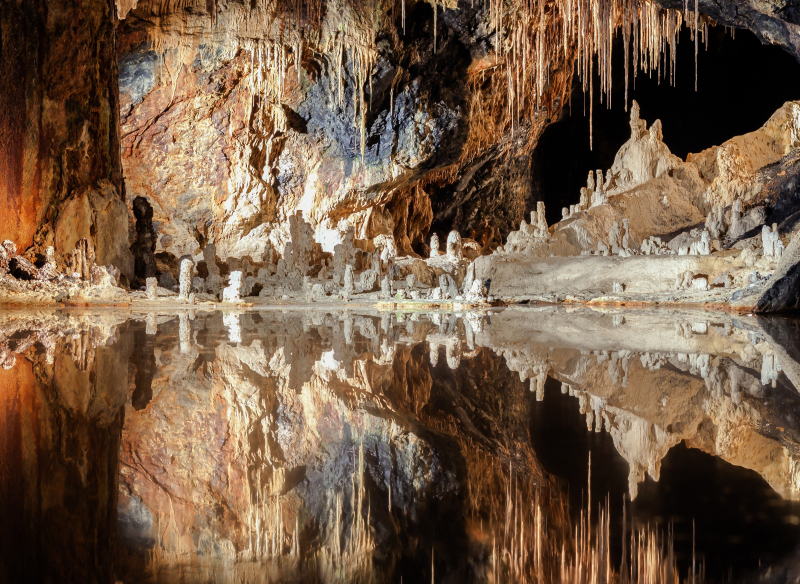
soraa.com 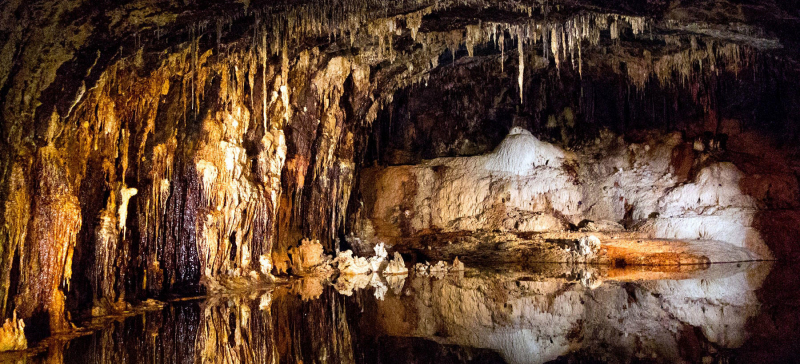
soraa.com












